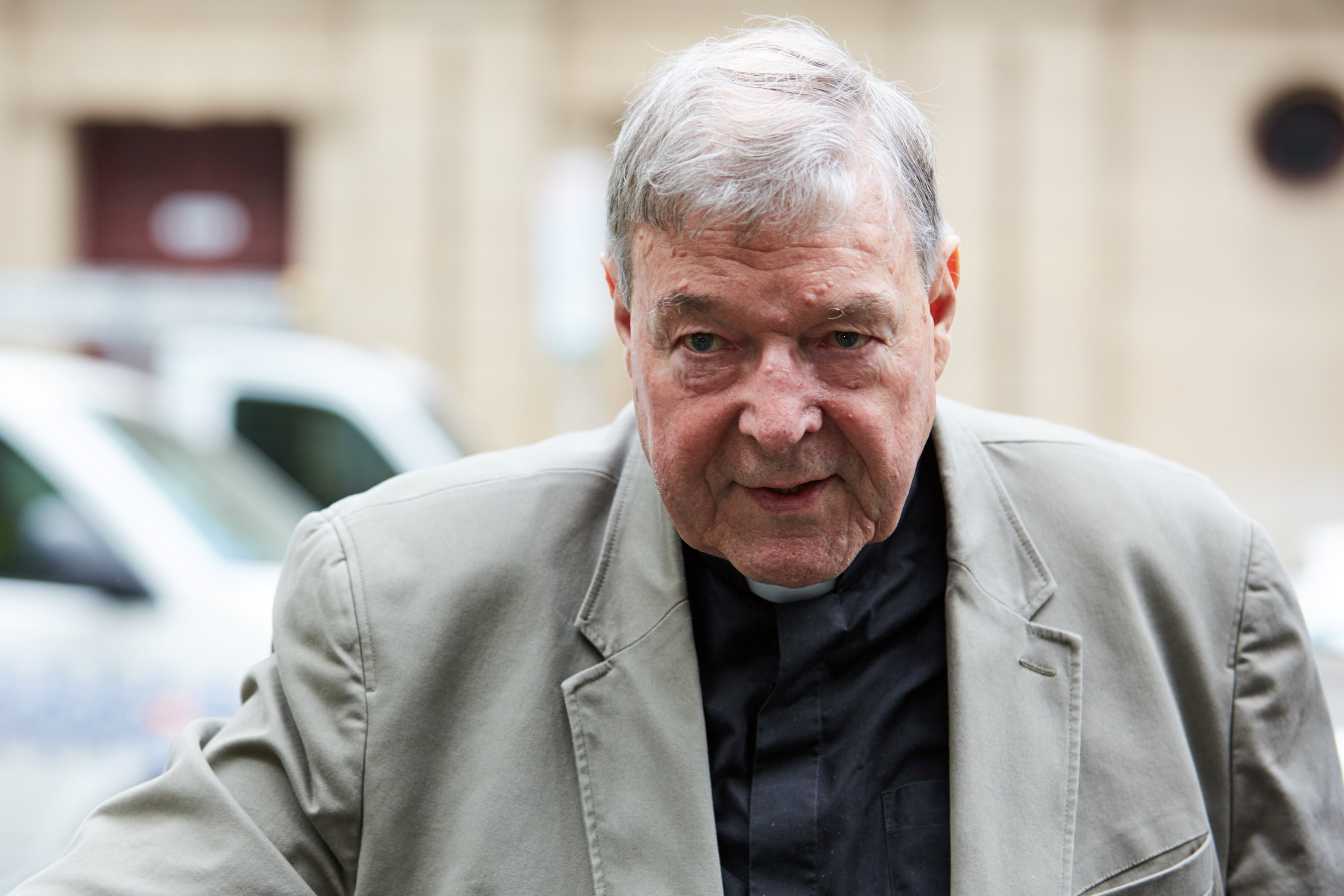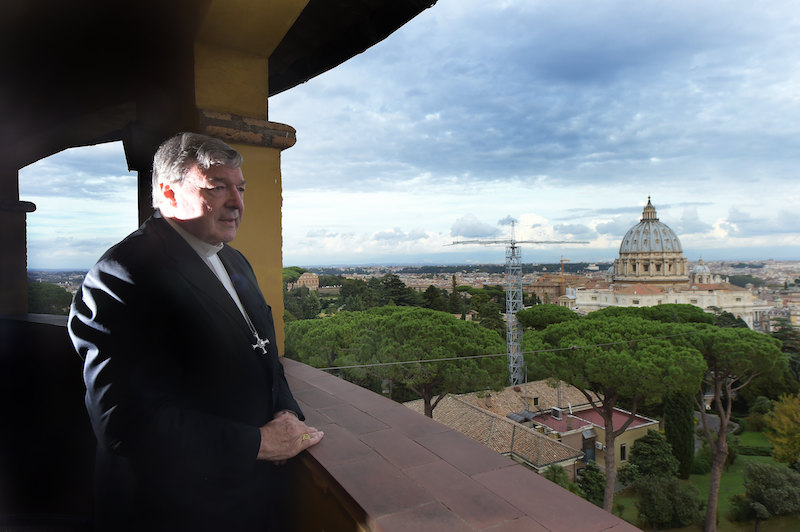Five years ago, a prediction that one member of the Sacred College of Cardinals would be in jail for the sexual abuse of children and another removed from the clerical state for abusing minors and vulnerable adults would have been viewed as something out of a Dan Brown novel.
Now, this is the reality, and it's shocking.
Theodore McCarrick, the former Cardinal Archbishop of Washington, now an ex-priest, and George Pell, the Australian cardinal summoned to Rome in 2014 by Pope Francis to clean up the Vatican's finances, sat at different ends of Catholicism’s conservative-progressive spectrum.
Both controlled levers of clerical power and influence, and both were significant political players in their home counties and internationally. Both rose through up through the ranks of the Church, and both faced serious questions about alleged abuse and misconduct.
Today the 88-year-old McCarrick is living out his days in prayer and penance at a friary in Kansas, while Pell has swapped an office in the Apostolic Palace for a jail cell.
The former Archbishop of Sydney and Melbourne - for years the face of Catholicism in Australia - is also subject to a church investigation and possible trial. This could see him being removed from the priesthood.
Both the Pell and McCarrick cases underscore how the clerical abuse scandal pays no attention to rank or status. This is an ecclesial crisis without obvious precedent. It also symbolises how a certain clericalist model of the church; built on status, immunities and placing protection of the institution above all things is falling away. As a Church founded on the resurrection, the hope is that something new will grow out of the wreckage.
It didn’t seem a coincidence that the ruling on McCarrick came days before the Vatican’s anti-abuse summit, and the suppression order on reporting on the Pell case was lifted two days after it closed.
The Vatican gathering had listened to demands from survivors of abuse, from the Pope and from the bishops that there must be a root and branch change in the Church’s culture and to ensure transparency in its handling of abuse.
Following news of the conviction in Australia, the Vatican said it would wait until the legal process was concluded – Cardinal Pell is appealing his conviction – before issuing any sanctions.
A statement explained that while the Holy See respected the court’s judgment they were still “awaiting the definitive assessment of the facts.” This was despite two trials, and a unanimous jury of twelve people sifting the evidence and coming to a unanimous guilty verdict.
Unlike McCarrick - whose cardinal’s red hat was removed following a credible allegation of abuse - Pell, 77, is in prison as a convicted child abuser but remains a member of the College of Cardinals.
A day later, the Vatican changed tack and announced that their former financial tsar would be facing a Church investigation that could lead to his removal form the priesthood. This came after a Vatican spokesman confirmed late on Tuesday evening that Pell was no longer Prefect of the Secretariat for the Economy.
The response from the Holy See underscored some of the differing views inside the Vatican about the Cardinal Pell verdict. Some find it hard to believe that he is capable of committing such crimes, and thus must be allowed to appeal. The cardinal, a figure of massive influence in the Church, has always vehemently maintained his innocence. But then so did McCarrick.
The initial reaction to the Pell conviction gave the impression that the Church is a myriad of competing departments, and one that victim survivors have long complained is hard to understand and navigate. An administration with competing views is understandable, but is a huge problem when it comes to handling abuse, and high profile offenders.
It reiterates the need for what Cardinal Reinhard Marx told the abuse summit is a transparent and functioning church administration where “actions, decisions, processes, procedures, etc, are understandable and traceable.”
The timing of the Pell conviction was also an opportunity, with the eyes of the media on the Church, to take clear and robust action. Swiftly.
But, by initially tying any decision on next steps to an appeal of a criminal conviction, gave the impression that some in the Church are in denial about the jury’s decision.
Then there are the other abuse allegations that have been levelled against the cardinal over the years. He was facing a second trial for abuse offences in Ballarat, which is no longer taking place due to lack of admissible evidence. In any event, it would be the Church’s job to decide whether those allegations are credible or not.
Pell had also been accused of abuse in 2002 while Archbishop of Sydney, and he stepped aside as a retired judge investigated - he found that the claim was “not proven,” but neither was it dismissed.
Canon Law states that a preliminary church investigation should be commenced whether there is a “semblance” of truth to the allegations. Was the 2002 allegation sent to the Congregation for the Doctrine of the Faith for an investigation?
In 2019, the prospect of Pell being stripped of the priesthood and his red hat is an extraordinary turnaround for one of the big beasts of English-speaking Catholicism.
For many years a darling of the Church’s traditional wing, Pell is an outspoken defender of doctrinal orthodoxy, whose name was once even whispered as a contender for the papacy. Always ready to debate and argue, he was the combative public face of Catholicism in Australia for decades.
This helped him to prosper under the papacies of John Paul II and Benedict XVI, and by Francis’ 2013 election his power base and reputation for administration earned him the prize he’d always angled for: a role in the Vatican.
He took on the role of Treasurer at the Holy See with gusto, and undertook some significant and overdue reforms.
But his abrasive and uncollegial style, coupled with a determination to see the Vatican follow the best accounting and audit practices of multinational corporations, created opposition.
In 2017, he returned to Australia to face the sex offence charges, and at that point was removed from public ministry and access to minors. The Pope confirmed that these restrictions remain in place while the appeal takes place. Much of this is academic, of course, given that the cardinal is in jail.
The conviction of Cardinal Pell and the defrocking of Theodore McCarrick marks an extraordinary moment in the Church, and one that will go down as a turning point in the history of the clerical sexual abuse crisis.
It is the time to face up to a painful truth about the abuse that was perpetrated by some in the highest positions in the Christian community. This is going to demand soul searching, calls for action and a change of heart.
It requires clear laws and procedures, and a deep scepticism of those using the ranks of the clergy further their status and ambition.
It means a Church ready to hold itself to the standards demanded by the gospel to protect the little ones, and to hear and believe the cries of those who have been abused.



 Loading ...
Loading ...